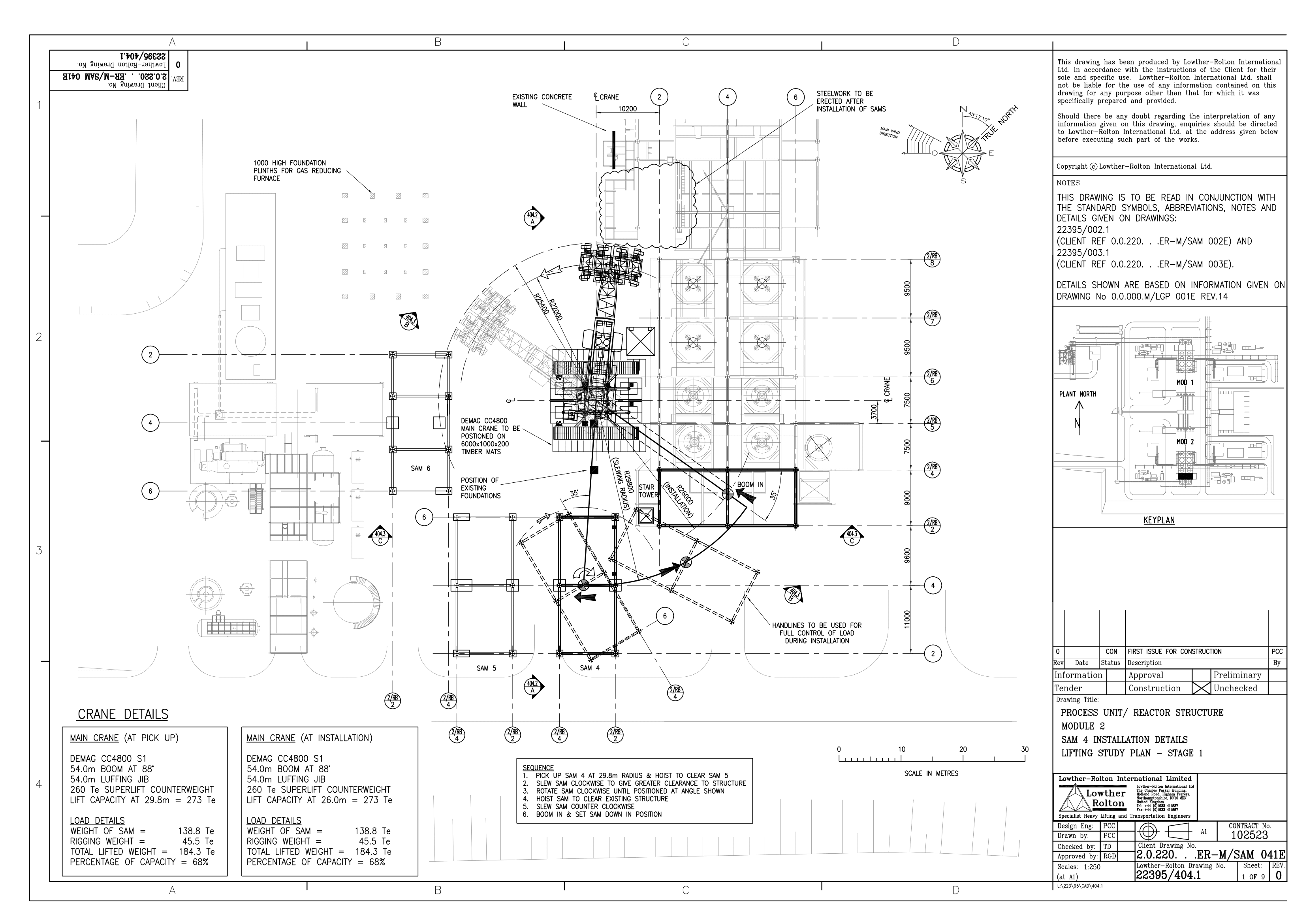Ensuring a project runs smoothly requires experienced and informed decision making from the get-go. This article will provide information about how Lowther-Rolton can leverage vast experience to advocate for you at every stage of a project, from day one until completion.
Feasibility Study by Lowther-Rolton
Lowther-Rolton are often appointed by our Clients to undertake feasibility studies, determining craneage and transportation requirements for the delivery/installation of Columns, Modules and other process equipment items as part of construction and outage projects.
Engaging Lowther-Rolton at an early stage enables you to identify safe and economical methods to minimize the potential effect on other work areas and activities. Each study is prepared independently by L-R to include various options for consideration, maintaining flexibility by designing schemes to suit a variety of equipment, and not narrowing options to suit any particular Contractor, or their machinery.
Whether the process Columns and Modules are to be manufactured locally, nationally or overseas, L-R can provide valuable logistic planning information for their transportation from place of manufacture to installation at the plant location. Engaging L-R for the crucial early stages of planning helps to ensure your project runs on time and under-budget.
Lowther-Rolton undertakes route surveys as part of the feasibility study. From the port of entry, to the plant location, including over the road transportation, barging and delivery to plot, this study covers every inch of the route, making sure risk is defined and controlled. This often includes assessment of restrictions such as overhead power lines, weak bridges/culverts and width restrictions. A preferred route is therefore established prior to the Transport and Heavy Lift (T&HL) contract being tendered, allowing checks of any dimensional restrictions/bridges/culverts to be technically assessed. This empowers you to proceed with a more detailed tender package, leading to a defined contract award.
Early information is often invaluable so that a range of potential transport or lifting equipment may be identified, which assists the planning and construction of civil works early in the project before Contractors are selected. This reduces the overall project schedule, without reducing flexibility.
Furthermore, Lowther-Rolton completes on-site surveys as part of the feasibility process to assess various installation options. Our concept drawings and supporting documentation regularly form part of the tender enquiry issued to T&HL Contractors. Supplying this information to each potential Contractor provides detailed common information from which their tender can be prepared, improving the quality and definition of each T&HL tender received.
L-R provides valuable design information regarding the ground preparation and crane support requirements to suit several alternative cranes prior to award of the T&HL contract. This allows piled crane foundations to be constructed if required, suitable for the different crane outrigger/crawler track footprint to suit the overall schedule of the Project.
T&HL Tender Assessment by Lowther-Rolton
Following receipt of the T&HL tenders, our Clients request Lowther-Rolton to complete a technical assessment of the proposals received and advise of any areas where further clarification/information should be provided by each T&HL Contractor. By doing so, L-R ensures that each tender received was priced on a ‘like for like’ basis. As part of our assessment, we highlight any particular technical deficiencies or benefits of each T&HL proposal that may affect the overall project construction regarding costs and schedules.
Technical Audit by Lowther-Rolton
After a contractor has been selected, our Clients engage L-R to complete an independent 3rd party Technical Audit of the engineered proposals issued by the successful Contractor, ensuring all aspects of the transportation and lifting activities were accommodated and that the operational activities are completed in an efficient and safe manner. Our Technical Audit system also covers design and checks, which are continued to the work site during operational attendance during load-out/load-in, transportation and installation, so that the agreed procedures are followed.
Design checks completed by L-R include lifting/tailing attachments, base ring strength, vessel/module local and global stresses, ground conditions and all other associated engineering aspects. With potentially multiple Vendors, T&HL Contractors and mechanical Contractors, there can often be interfaces between each party. As part of the L-R Technical Audit we ensure that there are no gaps, omissions or unmanaged interfaces, ensuring that the Client’s process equipment is handled at all times in a manner which does not compromise the Vendor design or warranty.
During our site audit, L-R shall ensure that each operation is completed according to the approved proposals. In addition, should any changes in the plan be required on the day of operation, our decades of on-site experience ensure that the changes made are safe to implement and agreed by all parties prior to implementation.
From the early stages of planning to design and implementation, Lowther-Rolton makes sure your project is completed safely, on time, and under-budget. Contact us today to discuss your specific needs and how we can help.
Lowther-Rolton is the premier independent engineering consultancy for Heavy Lift &
Construction Engineering, providing original in-house design and third party verification
services

